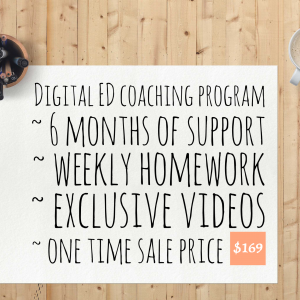Feeling stuck in eating disorder recovery?
Staying BUSY in eating disorder recovery can often lead to staying STUCK in eating disorder recovery and not moving to recovered.
After I finally accepted I had an eating disorder, I started to look for help. This can be a daunting task, but I finally found some people and scheduled appointments.
I thought to myself, “Hey, I’m recovering.” This is what people with eating disorders do.
I’ll do therapy. Check.
Perhaps I’ll try a dietician. Check.
Hmmm, how about group therapy. Check.
Psychiatrist appointment. Sure, okay. Check.
Maybe I need more. Okay, must do residential. Check.
Wait! It’s not working. I need alternative therapies. Meditation. Yoga. Check.
I kept handing my fate over to others hoping it would move the needle. The more appointments I made, the more dependent I was on therapy and the more permanent RECOVERY HELL became. I was stuck.
I guessed my way through, and those around me did too. At no point in seven years, did my team collaborate to come up with a multi-faceted game plan for me. Moreover, no one asked for my input in creating a roadmap.
3 Keys to Moving to “Recovered”
Read the 3 keys below to walk towards recovered and get out of recovery hell.
1) If you’re getting comfortable with your treatment, it’s not working.
I’d go to appointment after appointment, seeking something magical. But the only magic that came was a false sense of security. I felt comfortable. This is what I am supposed to be doing, I’d tell myself.
Occasionally, I’d feel good leaving an appointment and I’d uncover some major truth about the eating disorder. However, hours later, I’d find myself totally stuck in eating disorder recovery, behaviors and eating disorder lies.
You need to be pushed like you never been pushed before if you are going to move towards recovered. You will feel uncomfortable and question the hell out of recovery, but this is where it happens.
2) Freedom isn’t something you stumble upon. It requires a real eating disorder recovery action plan.
If you are in therapy, working with a coach, dietician or any other professional, DEMAND a plan. What are you working towards; how will you get there?
Together, CREATE a plan and a map to get to where you want to go. Without one, freedom is just an idea.
3) The only way to shape your destiny is to be involved in the plan.
You must have input in your eating disorder recovery plan. USE YOUR VOICE.
As a result, you are invested in your recovery and the probability of freedom is HIGH. On the other hand, when you just follow orders or shoot in the dark, recovery is a needle in a hay stack.
I’m NOT suggesting you ditch appointments, but I am suggesting you take a hard look at what those appointments are doing for you.
Are you going because you’re making progress? Or are you going because that’s what you think the road to recovered looks like?
Do the work
Work like hell in between appointments. Don’t rely on an hour long appointment each week. DEMAND homework and demand steps or action items before your next appointment. Start to use your voice and advocate for yourself.
Finally, stay uncomfortable. This is the path from being stuck in eating disorder recovery hell to recovered. If you’re ready to make meaningful progress, reach out to a coach today.



